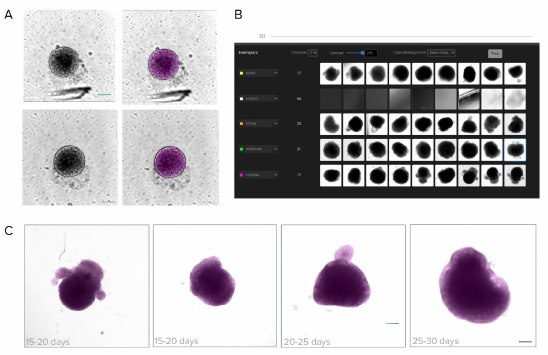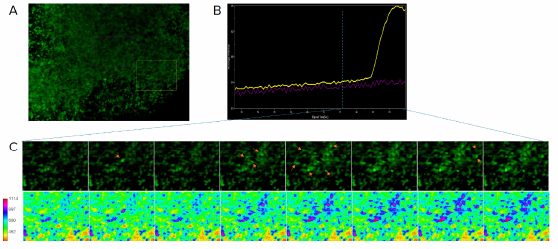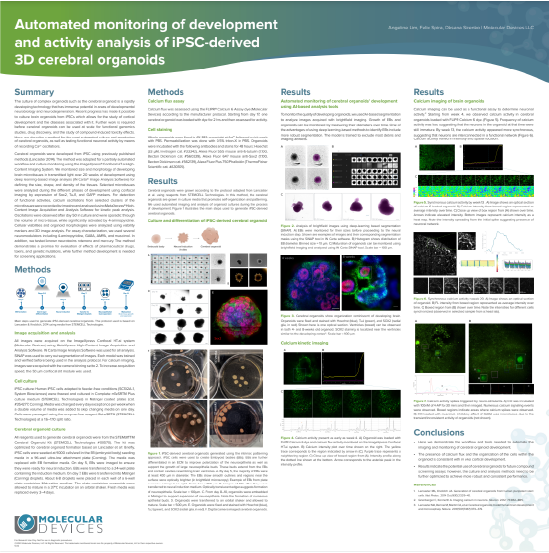
Brain Organoids
Organoid technology for understanding brain development and neuronal diseases
Brain Organoids
Brain organoids are 3D tissue models derived from human-induced pluripotent stem cells (hiPSCs). When cultured, the stem cells differentiate into various neural cells that mature over time to resemble structures of brain regions such as the forebrain (cerebral) or mid-brain.
The culture of complex organoids such as the cerebral organoid is a rapidly developing technology that has immense potential in areas of developmental neurobiology and neurodegeneration. Recent progress has made it possible to culture brain organoids from iPSCs which allows for the study of cortical development and the diseases associated with it. Further work is required before cerebral organoids can be used at scale for functional genomics studies, drug discovery, and the study of compound-induced toxicity effects.
General steps used to develop iPSC-derived cerebral organoids
Cerebral organoids were grown according to the protocol adapted from Lancaster & Knoblich, 2014. In this method, the cerebral organoids are grown in culture media that promotes self-organization and patterning.
- Day 0 – Embryoid Bodies (EB) formation - iPSC cells were seeded in a 96-well ultra-low attachment plate
- Day 2-5 – Germ layer differentiation - feeding and monitoring the EBs
- Day 5 – Neural induction - transfer to 24-well plate containing neural induction medium
- Day 7 – Transfer to Matrigel droplets - neuroectodermal tissues are transferred to droplets of Matrigel
- Day 8-10 – Neuroepithelial bud expansion - the outgrowth of neuroepithelial buds expand and contain fluid-filled lumens
- Day 11 – Maturation - tissues are transferred to a spinning bioreactor to promote growth and expansion

Main steps used to generate iPSC derived cerebral organoids. The protocol used is based on Lancaster et. al., using media from STEMCELL Technologies.
Monitor developing 3D cerebral organoids using AI-based analysis tools
Developing brain microtissues can be monitored for their size and morphology using AI-based analysis tools like our IN Carta® Image Analysis Software, helping to define the size and shape of the tissues. Selected microtissues were analyzed by confocal imaging during different phases of development for cellular organization by expression of different neuronal markers.
Figure 2: Analysis of brightfield images using deep-learning based segmentation. A) EBs were monitored for their sizes before proceeding to the neural induction step. Shown are examples of images and their corresponding segmentation masks using the SINAP tool in IN Carta software. B) Histogram shows the distribution of EB diameter. Binned size = 10 μm. C) Maturation of organoids can be monitored using brightfield imaging and analyzed using IN Carta SINAP tool. Scale bar = 100 μm.

Calcium imaging of brain organoids to determine neuronal activity
For detection of functional activities, organoids were loaded with calcium-sensitive dye, and then Ca2+ oscillations were recorded with the ImageXpress® Confocal HT.ai High-Content Imaging System and analyzed using MetaXpress® High- Content Image Acquisition and Analysis Software for kinetic peak analysis. We show that high-content imaging paired with AI-based analysis used with 3D cerebral organoids is a promising tool for compound screens and toxicity evaluations.
Figure 3. Synchronous calcium activity by week 13 . A) Image shows an optical section of calcium 6 loaded organoid. B) Calcium intensity from boxed region is represented as average intensity over time. C) Close-up view of box region from (A) shown over time. Arrows indicate elevated intensity. Bottom images represent calcium intensity as a heat map. Note the intensity spreading from the initial spike suggesting the presence of neuronal network.

Featured asset
Automated monitoring of development and activity analysis of iPSC-derived 3D cerebral organoids
Here, we describe a method for the semi-automated culture and monitoring of cerebral organoids, as well as testing functional neuronal activity by means of recording Ca2+ oscillations. Brightfield imaging with artificial intelligence (AI)-based segmentation can help monitor the quality of developing organoids by tracking the growth in diameter and shape. The neuronal activity of brain organoids can be determined from calcium activity. Confocal imaging reveals calcium activity to determine the maturity of the neurons. Furthermore, the cellular organization can be monitored via confocal imaging with differential staining.

Latest resources on organoid research
The complexity of 3D assays remains a hurdle for the wider adoption of organoid models in research and drug screening. New advanced tools for imaging and analysis, as well as assay automation are critical for increased quality of information, throughput, and precision of complex biological models. Learn how high-throughput, high-content imaging and analysis paired with AI-based analytic tools can improve the accuracy of your organoid studies.